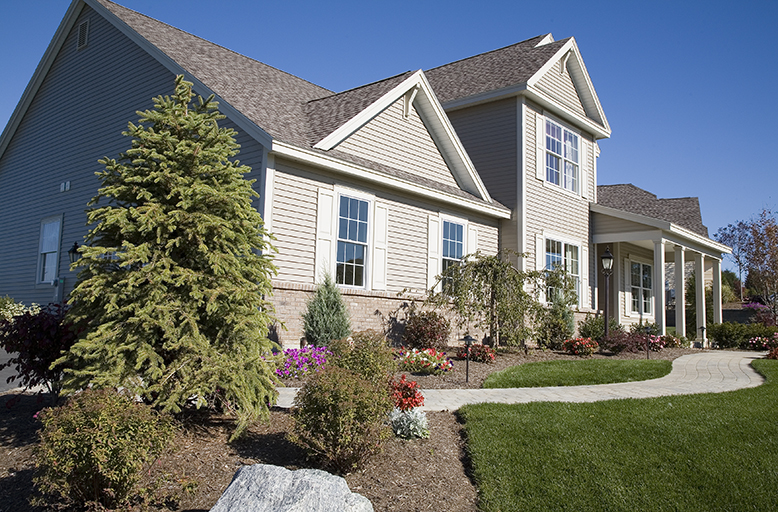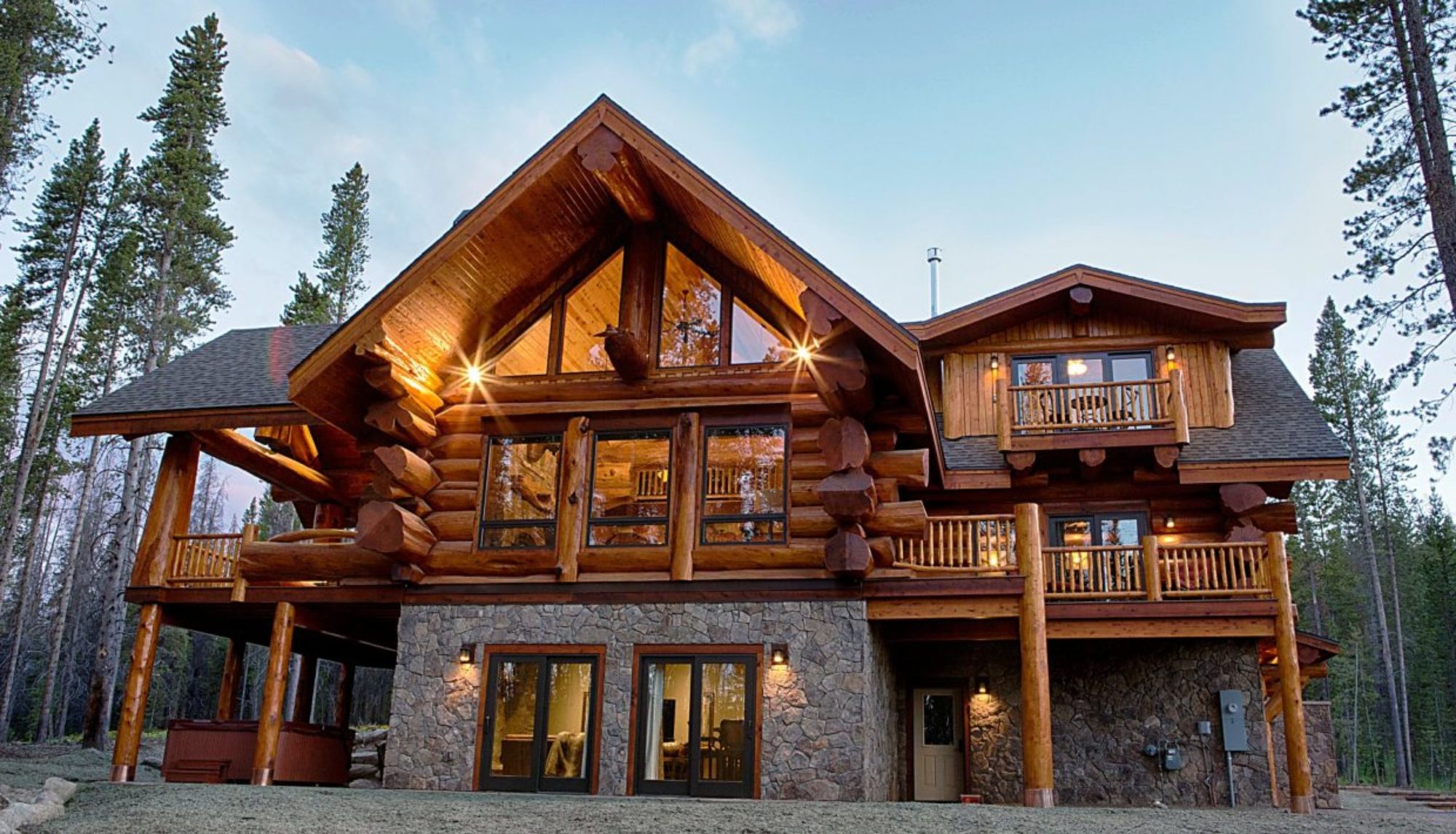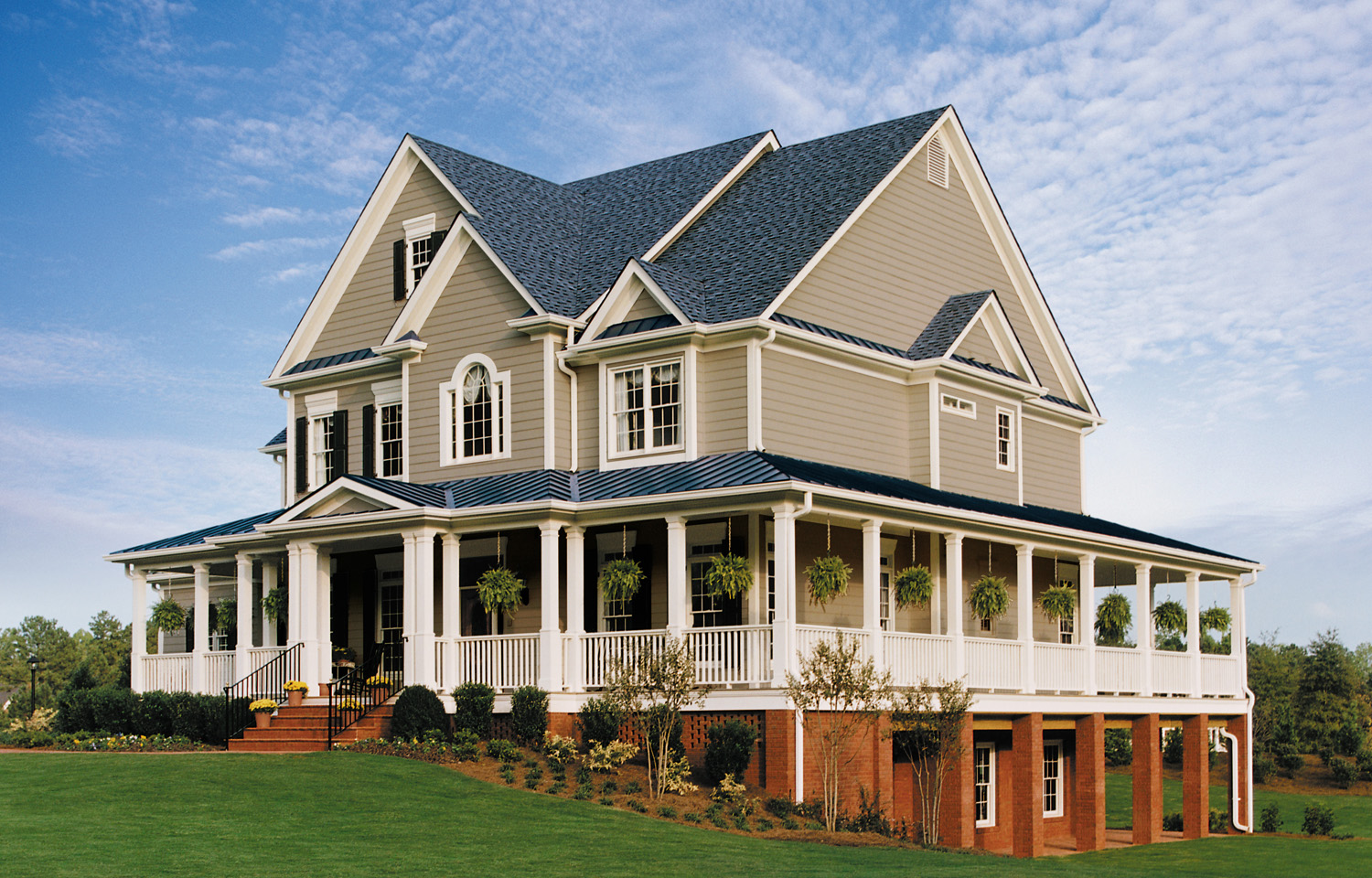Vinyl is the #1 material in the U.S. due to its pros (namely low cost, versatility and low maintenance requirements). Warranties are usually life-long and are sometimes transferable. This is truly a pro, but as it varies by contractor, it is more of a consideration.
Vinyl is typically a horizontal lap-type siding, designed to mimic traditional wood-lap. The height of each individual lap (or what would resemble a plank of wood) is generally what distinguishes brand or model types, along with the thickness of material.
Material Types and Options:

Vinyl essentially comes in two types – one which is called hollow-back or is just the siding material, the other which is foam-back, to provide extra layer of insulation. Foam-back adds about 15% more to the cost of siding material, but the cost can be easily recouped via energy savings.
Vinyl comes in a number of thicknesses (which add to cost), and as seams may be a con, it does have a seamless option, but that too adds on to cost.
The material is fairly durable and will last a good 20 to 40 years, usually with a warranty to back this up.
Costs per square foot has a fairly wide range based on factors noted above and brand considerations. Our research shows it as little as $5.50 and as high as $15.50. A perhaps more accurate range is $6.50 to $8.50 for standard vinyl siding, and $8.50 to $14.50 for deluxe vinyl, depending on the project variables.
An average-sized house (2,000 sq. ft. of siding) will cost between $17,000 and $29,000 for standard siding, including materials, installation, and warranty.
Pros: Low cost, versatile, easy to maintain, wide array of color options, easier to install (possible to go the DIY route), color is throughout material, so nicks and scratches aren’t readily visible, generally takes a long time to fade and when it does, it is typically uniform across the entire structure, material is available at home improvement centers such as Lowe’s, Home Depot, and through the contractor building supply centers such as Bradco, Beacon Supply, Harvey’s Industries, etc.
Cons: some dislike perception of plastic-like appearance, appearance of seams, not very Eco-friendly, rare but instances of it melting and having appearance of buckling
Vinyl vs. Fiber Cement – AKA James Hardie Siding
Fiber cement boards as siding were originally created by James Hardie (the company) and for this reason their name is virtually synonymous with the material. Though they are no longer the only company that makes this type of siding material, just the most well known.
The material is a mix of wood pulp, cement, clay and sand. It is about as durable as vinyl, but doesn’t have the plastic look associated with vinyl. It is fairly versatile in that it can appear as horizontal lap siding, but may also be manufactured to mimic stucco or large panel masonry.
The material itself will last between 25 to 50 years. The surface though may require repainting well before that. Warranties for fiber cement are typically 30 years.
Pros: low maintenance, non-flammable, impervious to insects, resists expanding and contracting with extreme temperature changes
Cons: can have issues with moisture build up below the surface, very heavy material, requires expert installation, not easy to replace, not known if it is Eco-friendly (not enough data)
Cost per sq.ft. for fiber cement is $9.50 to $16.50 installed.
For a typical house with 2,000 sq.ft. of siding, it will cost between $19,000 and $33,000 for standard fiber siding, including materials and supplies, professional installation, and warranty.


I’ve always really liked vinyl siding because of it’s versatility and color variety. I know that a lot of people have started leaning more toward the fiber cement siding because of its resistance to fire, but I still think there’s a lot of good things in the vinyl.
And vinyl is cheaper, which can’t be overlooked when you’re remodeling your home, especially if you don’t live in an overpriced real estate market. Thanks for sharing!